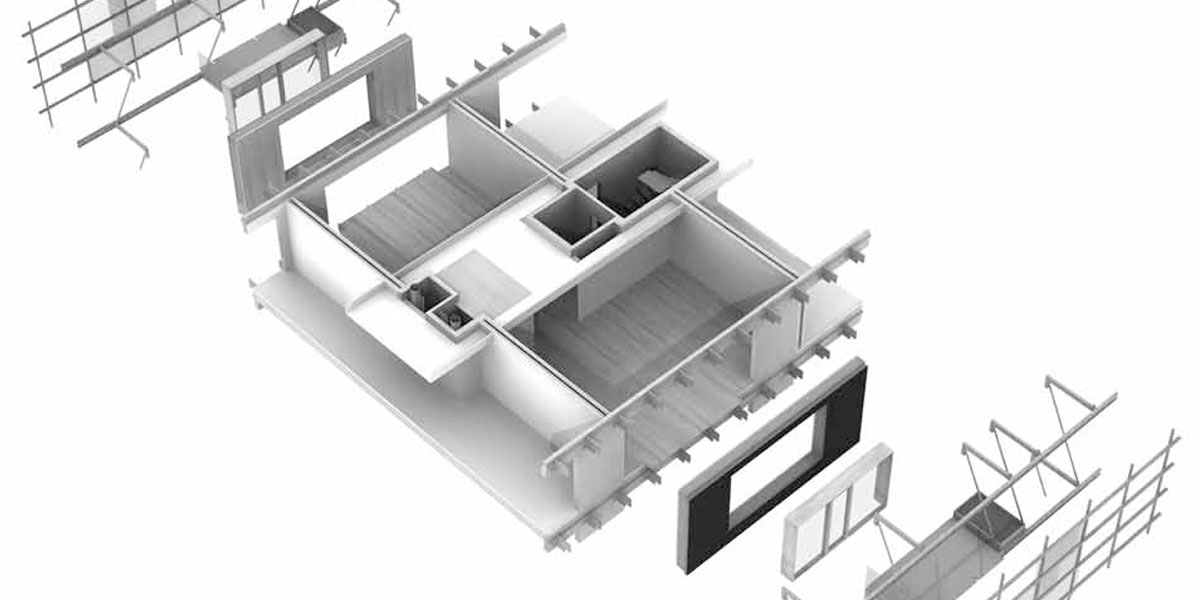Downloads
DOI:
https://doi.org/10.7480/jfde.2013.1-2.650Abstract
This paper argues for a new critical approach to the ways architectural design strategies are developing. Contemporary construction industry appears to evolve into highly specialized and optimized processes driven by industrialized manufacturing, therefore the role of the architect and the understanding of the architectural design process ought to be revised. The paper is based on the following underlying hypothesis: ‘Tectonic thinking – defined as a central attention towards the nature, the properties, and the application of building materials (construction) and how this attention forms a creative force in building constructions, structural features and architectural design (construing) – helps to identify and refine technology transfer in contemporary industrialized building construction’. (This definition of tectonic thinking forms part of a large, central research project: Towards a tectonic sustainable building practice, that is presently (2010- 2014) executed in collaboration between; The Royal Danish Academy of Fine Arts – School of Architecture, Aarhus School of Architecture, and The Danish Building Research Institute.)
Through various references from the construction industry, business theory and architectural practice the paper offers various analyses, comparisons and concrete design approaches. How architectural design processes and the tectonic design can benefit from Integrated Product Deliveries, mass-customization and Design for Disassembly is examined and discussed. The paper concludes by presenting a series of arguments that call for adaptable systems based on sufficient numbers of industrialized building products of high quality and a great variety of suppliers, and point at the need for optimizing our use of resources in order to reach sustainable solutions in architecture.
How to Cite
Published
Issue
Section
License
Copyright (c) 2013 Anne Beim

This work is licensed under a Creative Commons Attribution 4.0 International License.
Authors or their institutions retain copyright to their publications without restrictions.
References
Beim A., Nielsen J. & Vibæk K. S. (2010). Three Ways of Assembling a House, CINARK RESEARCH. The Royal Danish Academy of Fine Arts School of Architecture Publishers, 2010, p. 52.
Dam T. (2007). Conference paper: Does tectonics make meaning in landscape architecture, International Conference: Tectonics Making Meaning, University of Eindhoven.
Gilmore, J. H. & Pine J. B. (2007). Authenticity: What Consumers Really Want. Harvard Business Review Press.
Kieran, S. & Timberlake J. (2004). Refabricating Architecture: How Manufacturing Methodologies are Poised to Transform Building Construction, McGraw Hill Co., NY.
Mikkelsen, H., Beim A., Hvam L. & Tølle M. (2005). SELIA – Systemleverancer i Byggeriet – en udredning til arbejdsbrug (SELIA – Integrated Product Deliveries in construction – a survey for project development). DTU, Denmark’s Technical University, Institute of Production & Management.
Nielsen, S. (2011). Adaptability as a tectonic strategy. In: R. M. Thomsen (ed.) & A. Beim (eds.) The Role of Material Evidence in Architectural Research: Drawings, Models, Experiments. The Royal Danish Academy of Fine Arts, Schools of Architecture, Design and Conservation.
Nilsson F. (2007). New technology, new tectonics? On architectural and structural expressions with digital tools, International Conference: Tectonics Making Meaning. University of Eindhoven, Netherlands.
Pine J. B. (1992). Mass Customization. The New Frontier in Business Competition. Harvard Business Review.
Strike, J. (1991). Construction into Design: The Influence of new methods of construction on architectural design 1690-1990. Oxford, United Kingdom: Butterworth-Heinemann Ltd.
